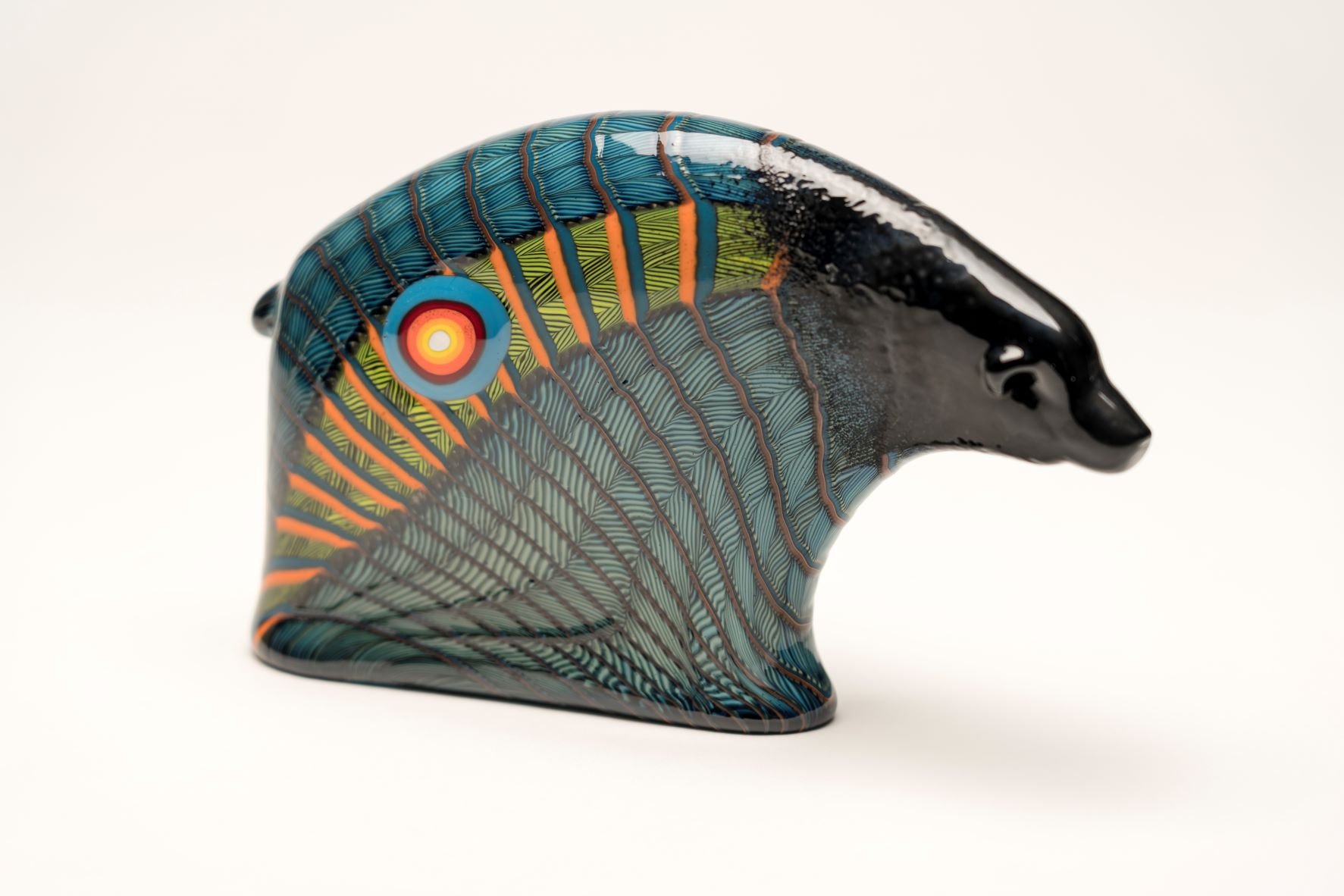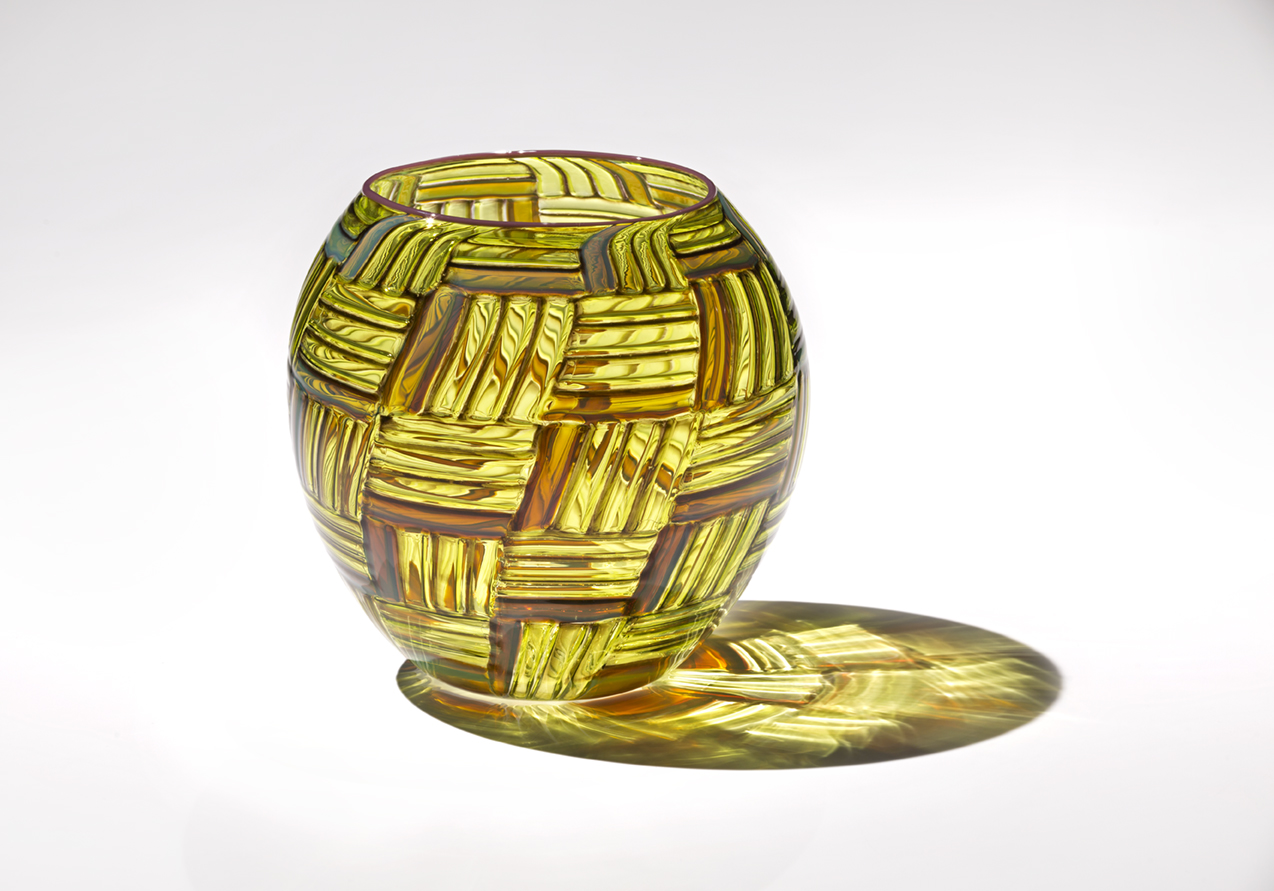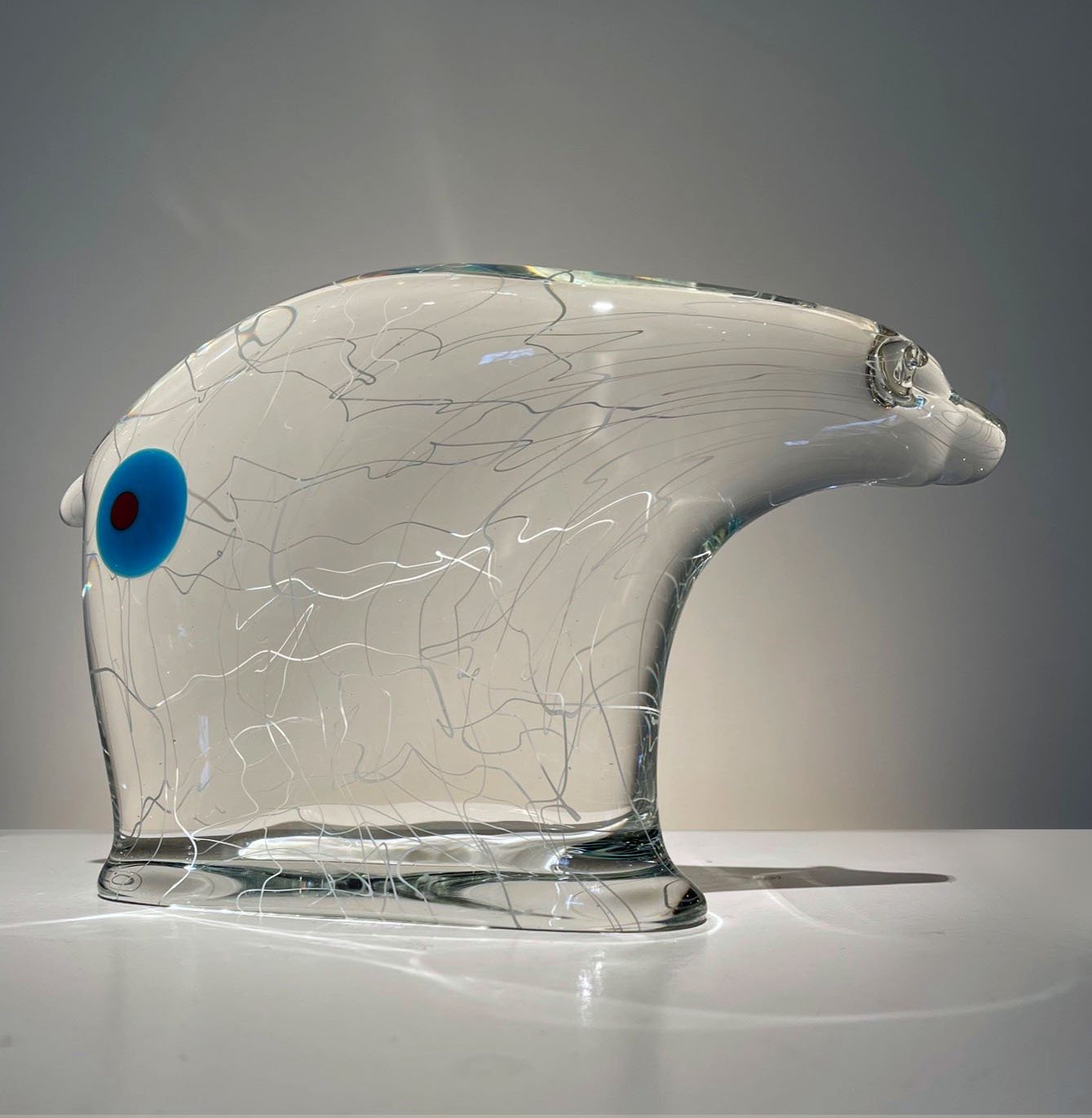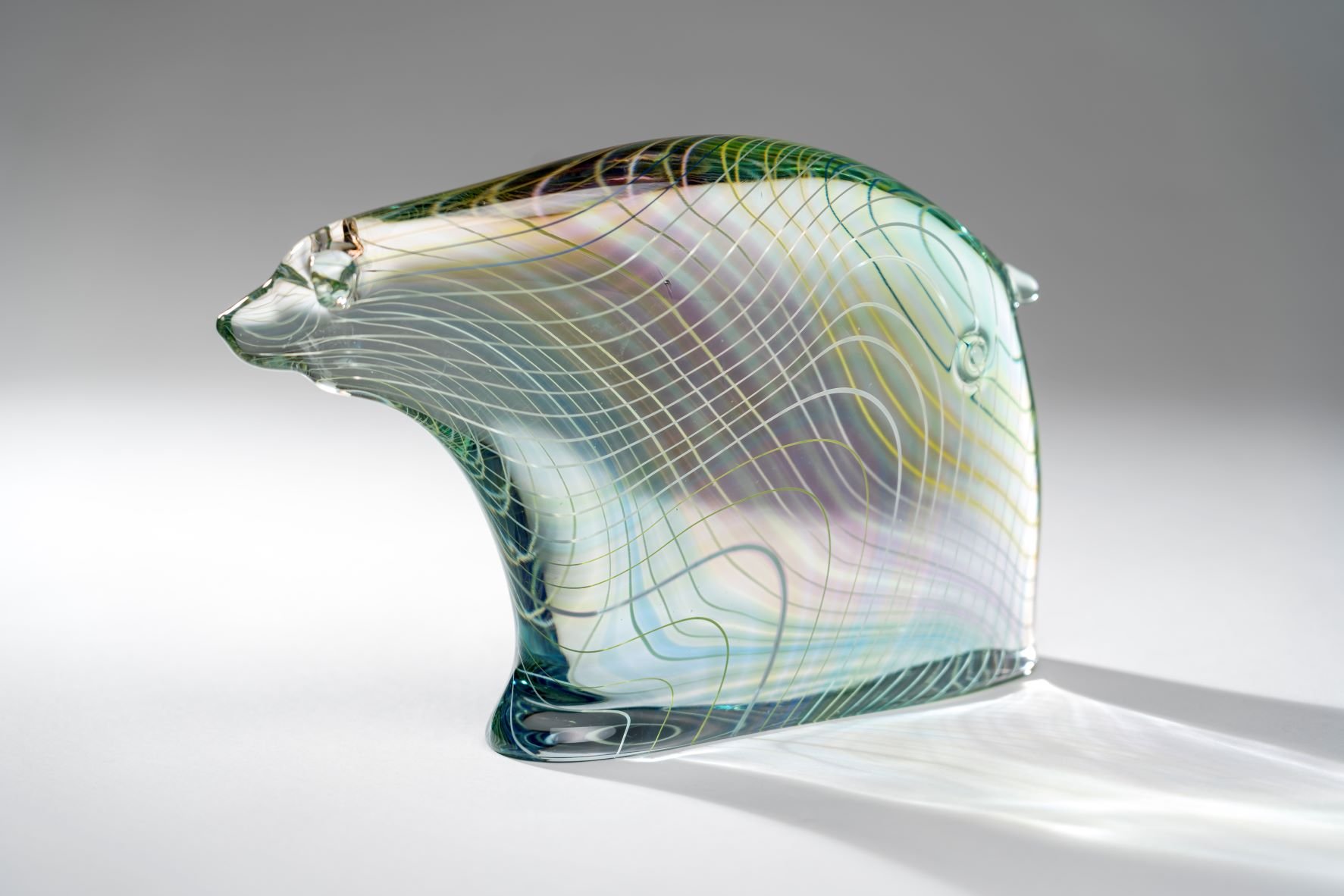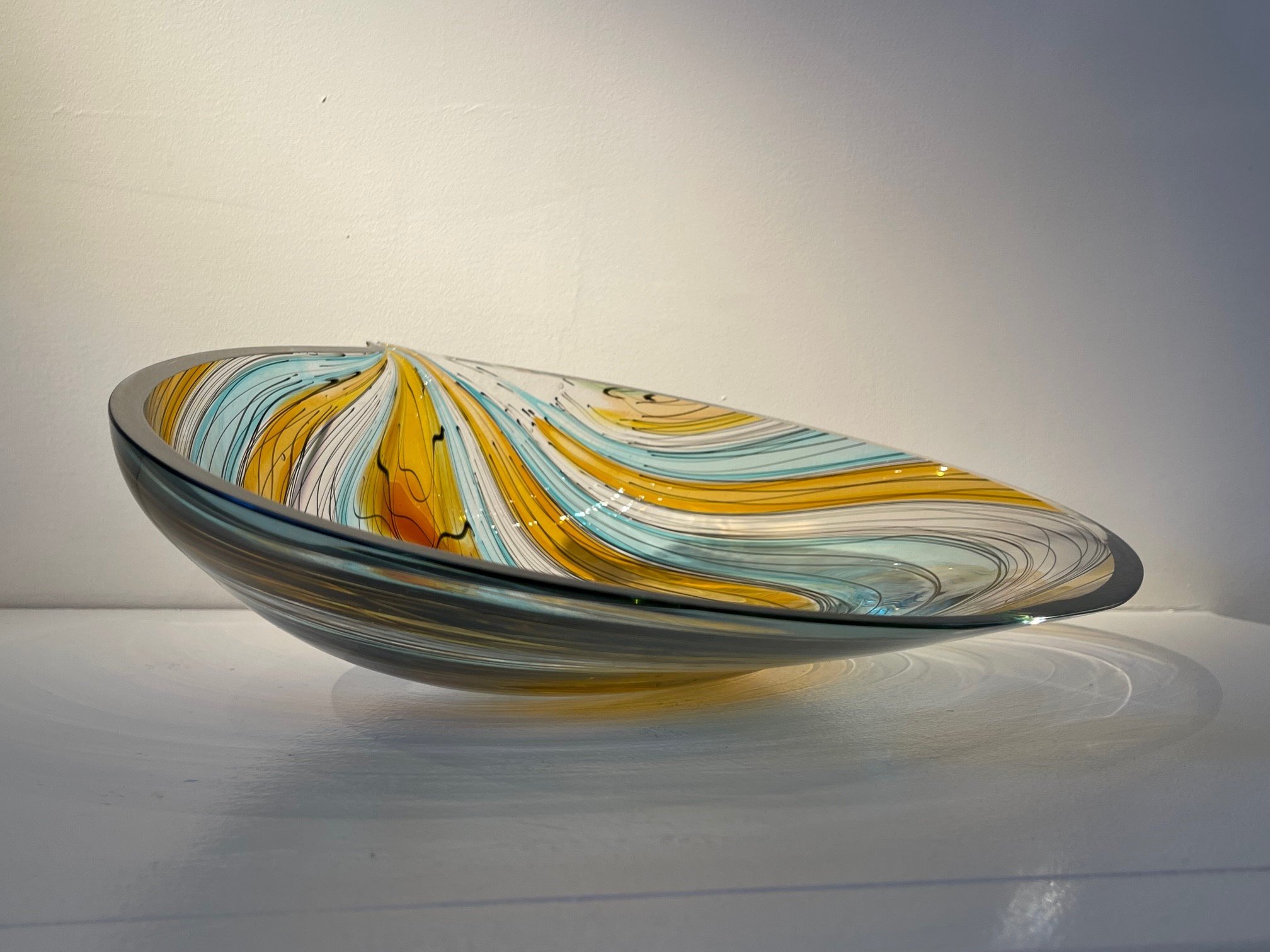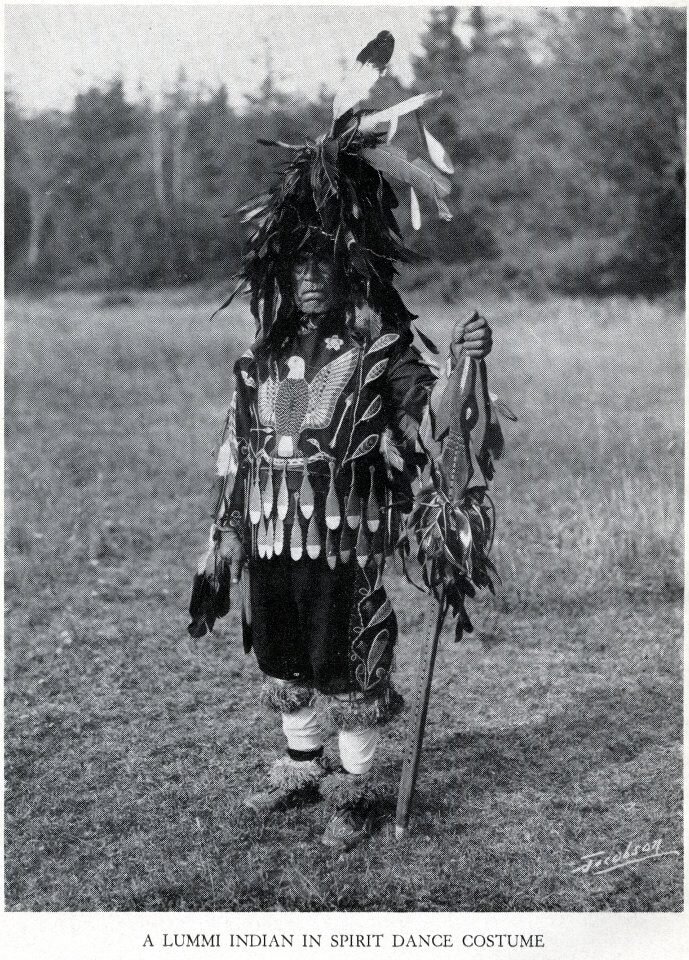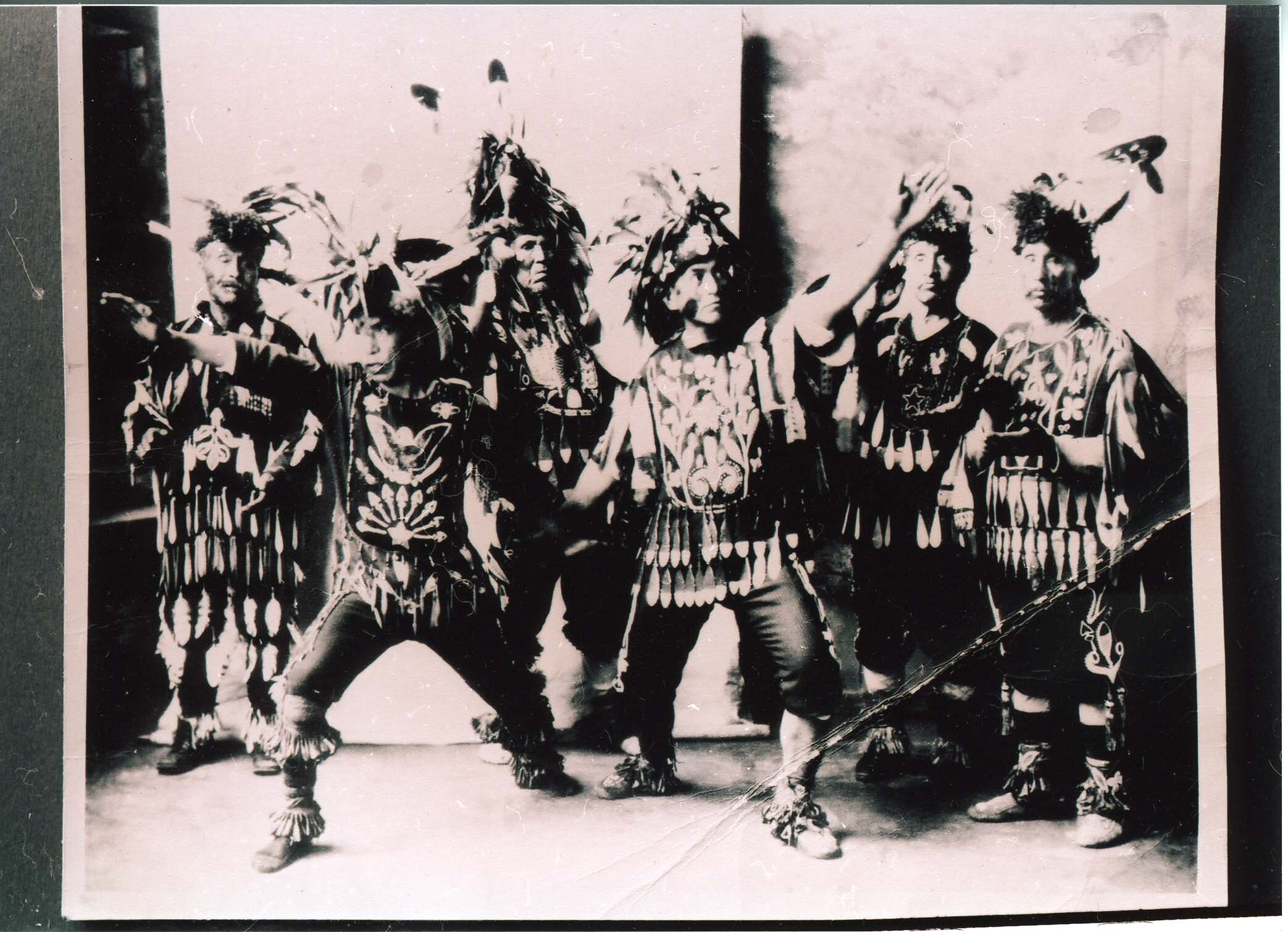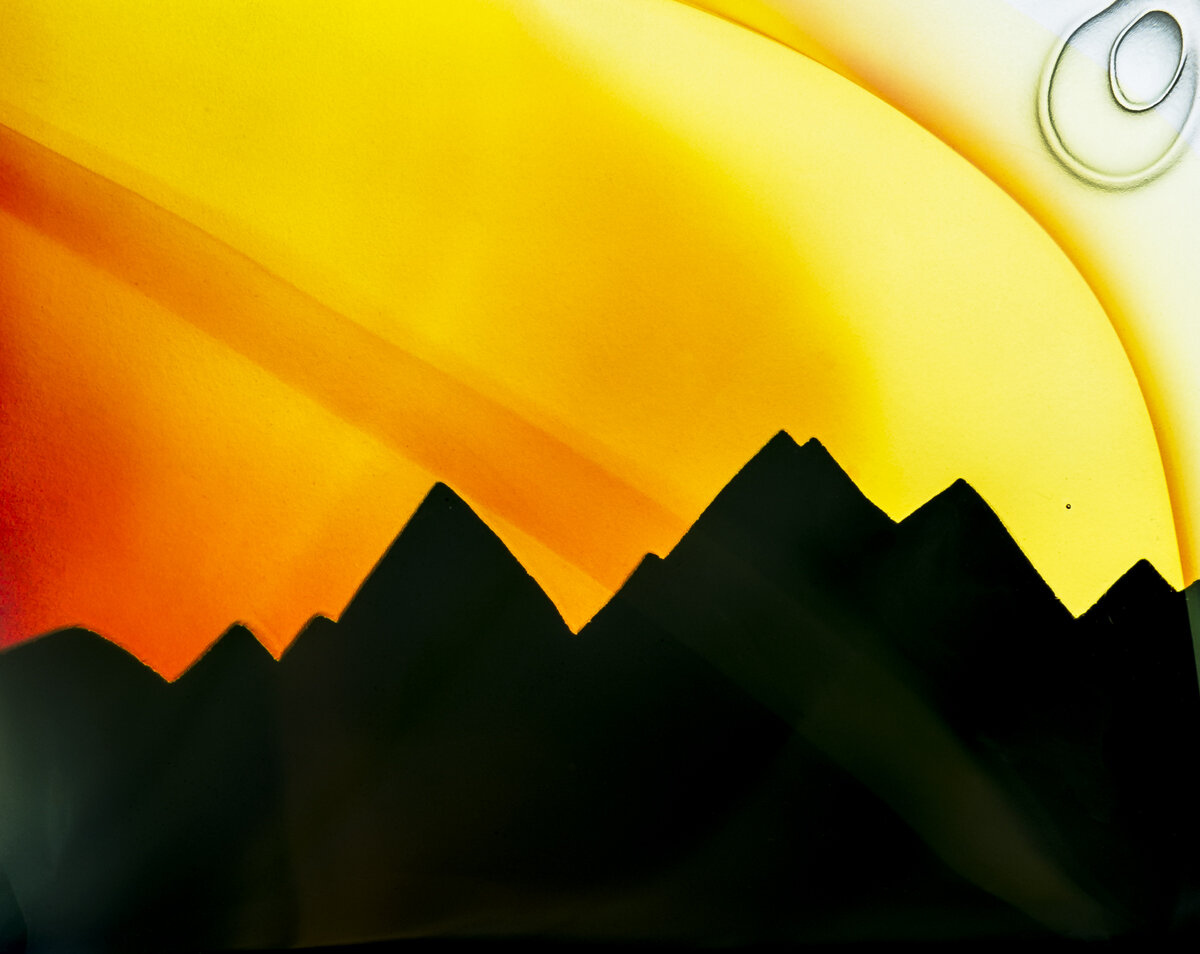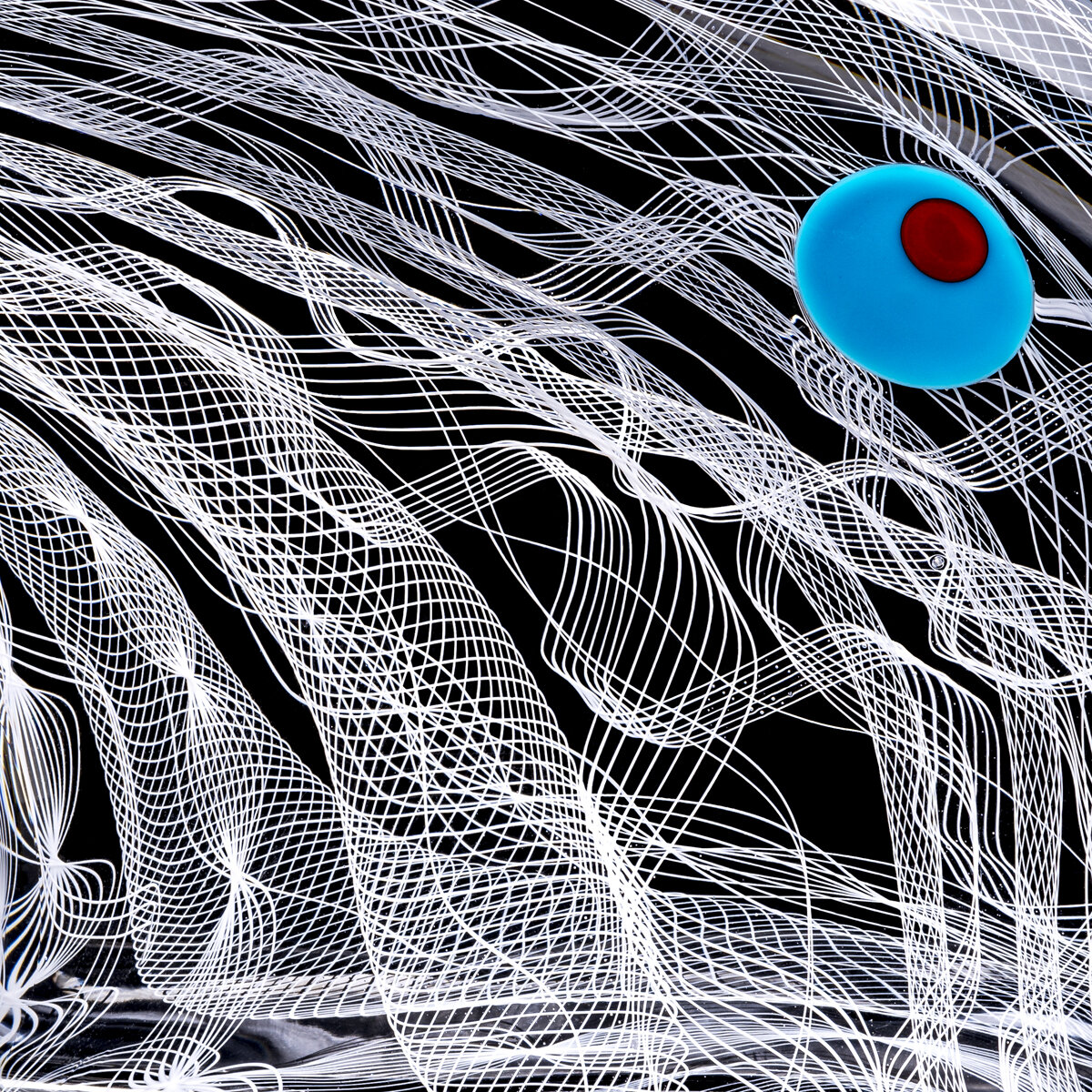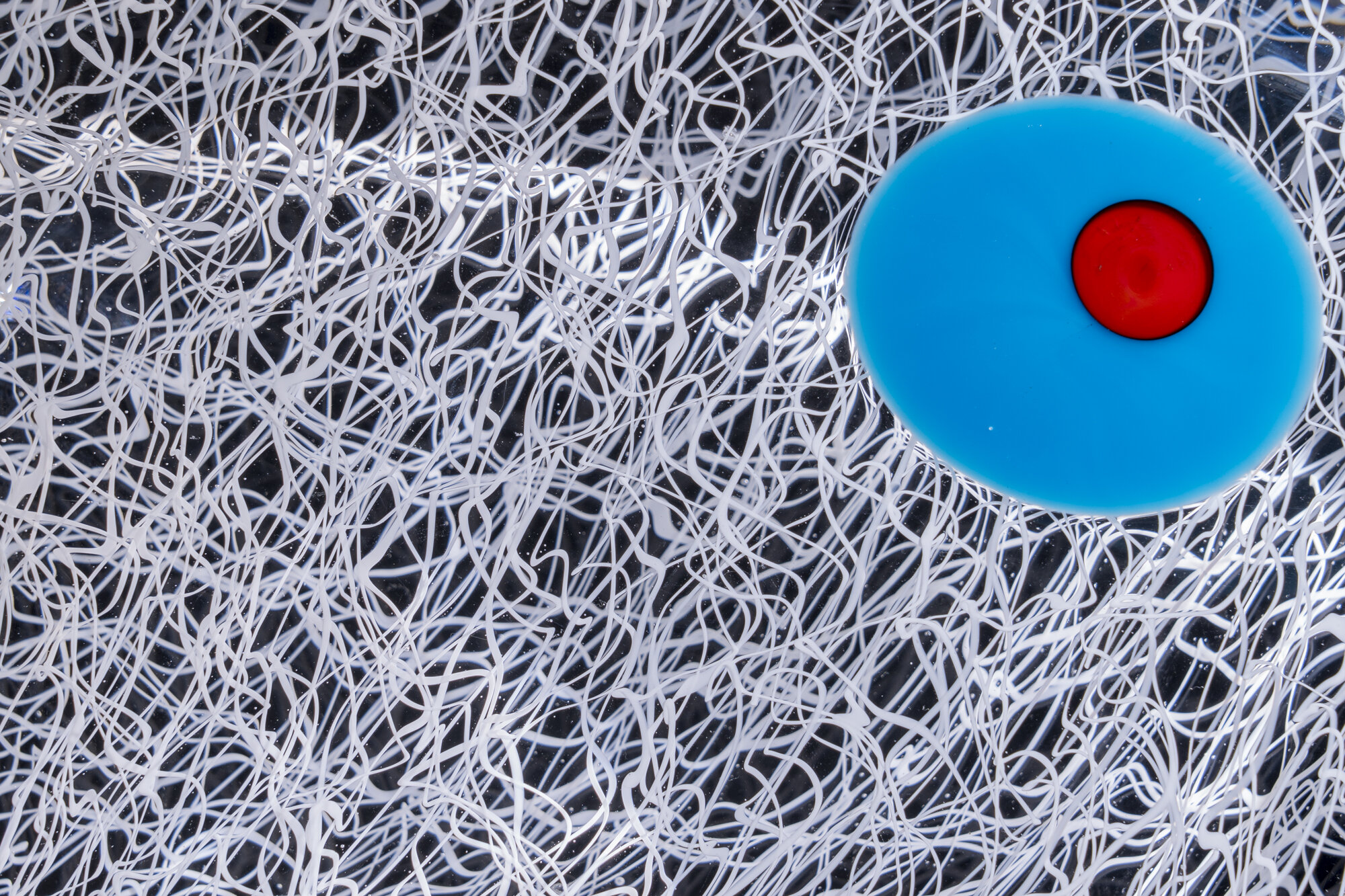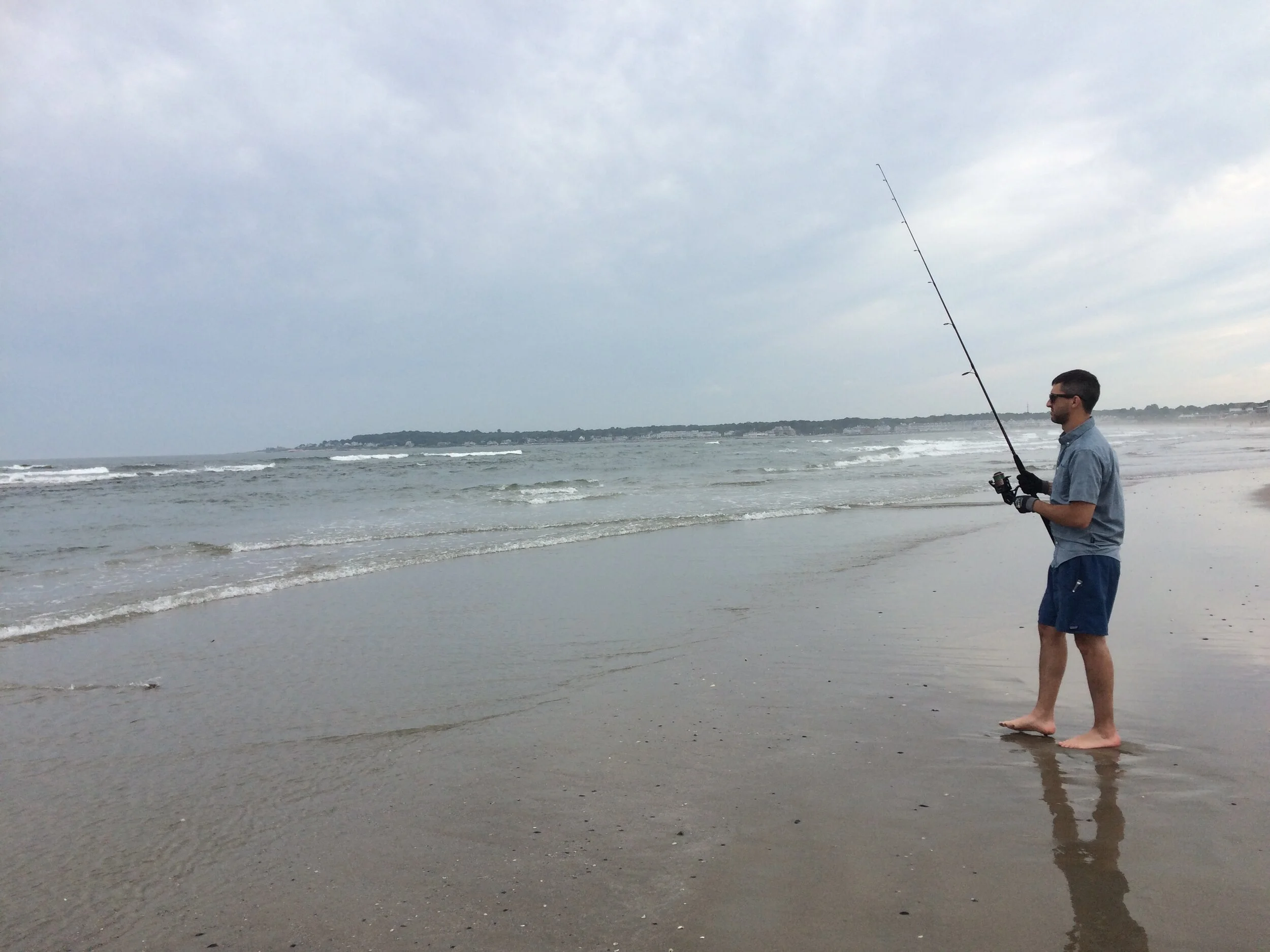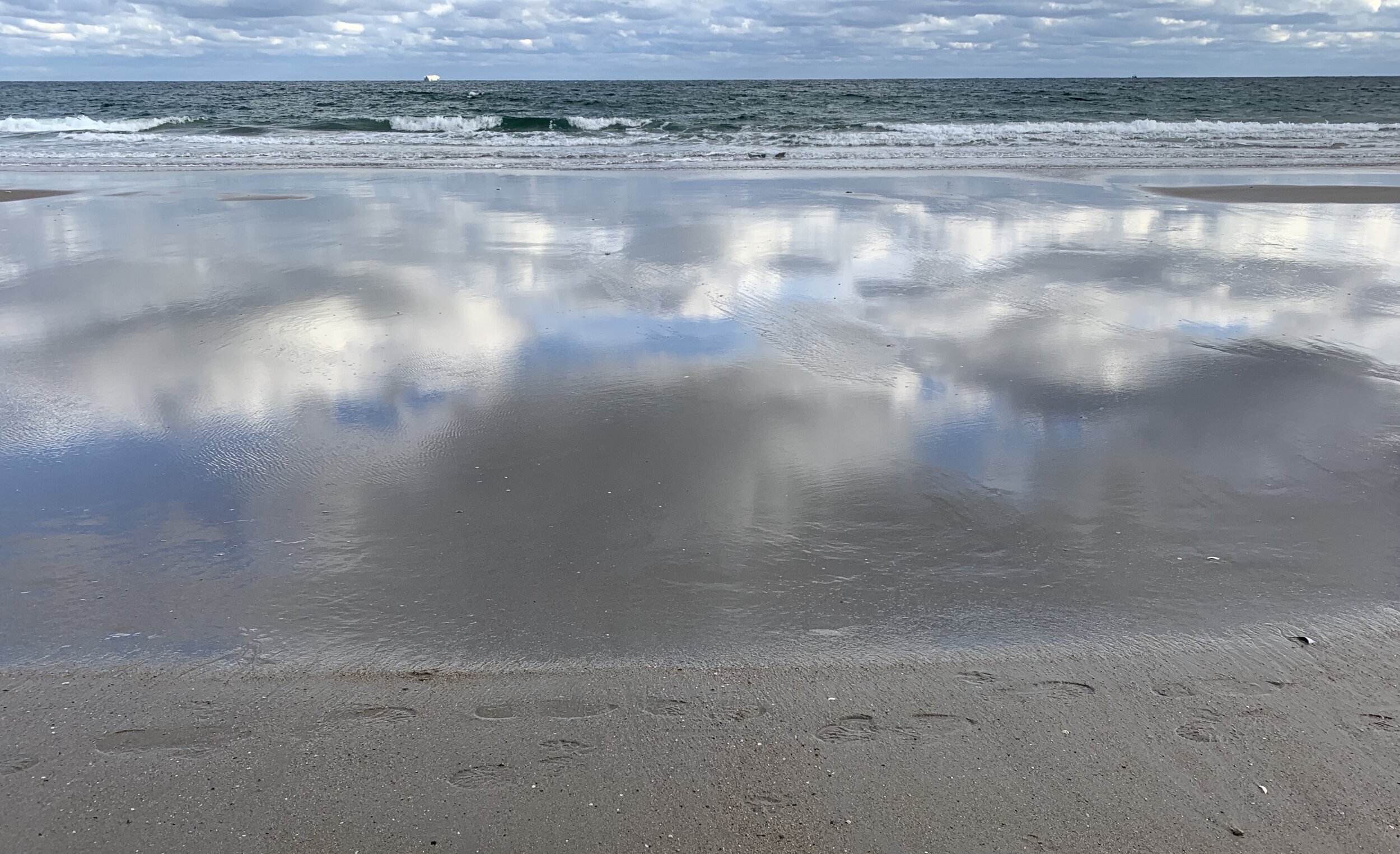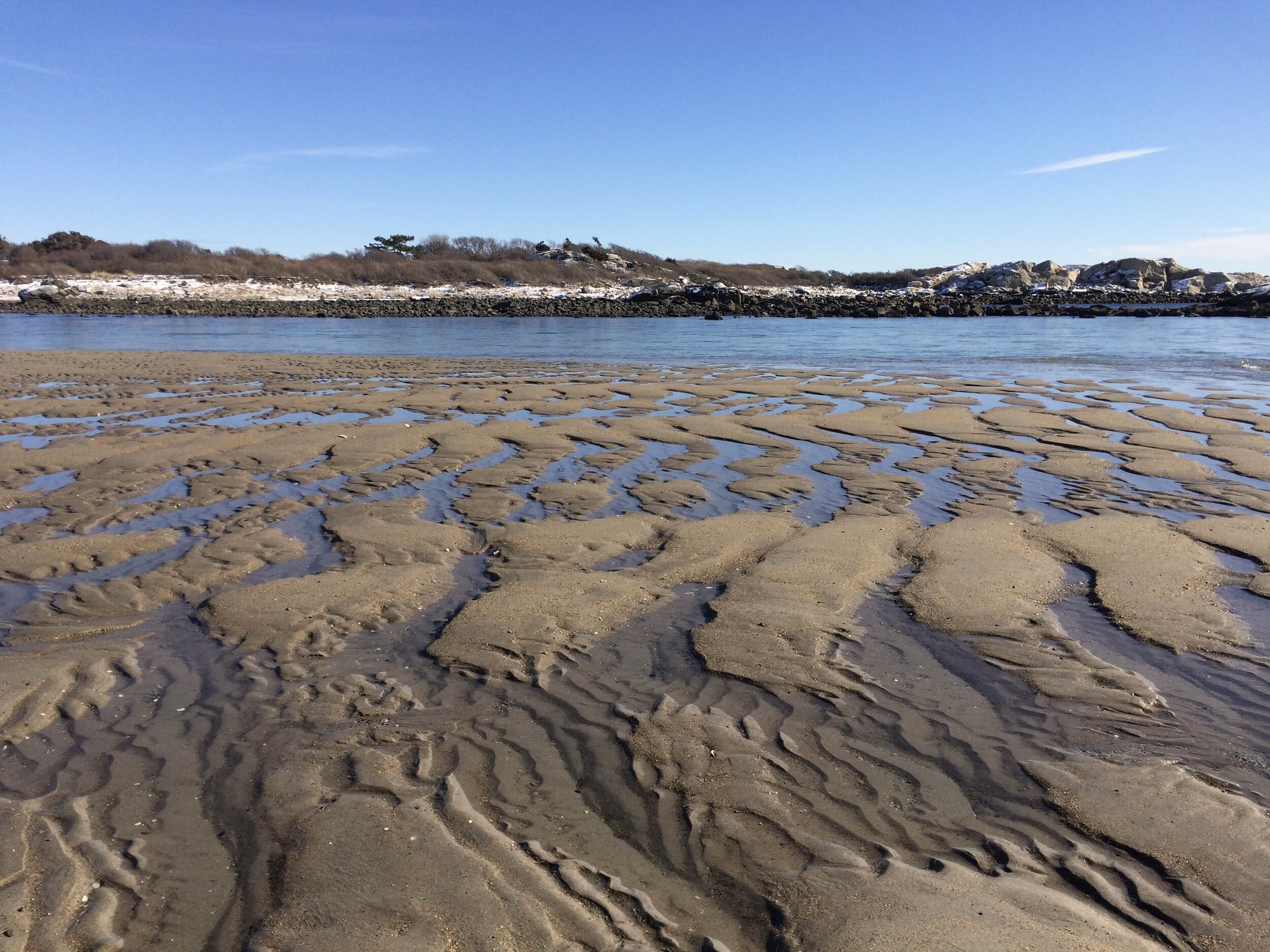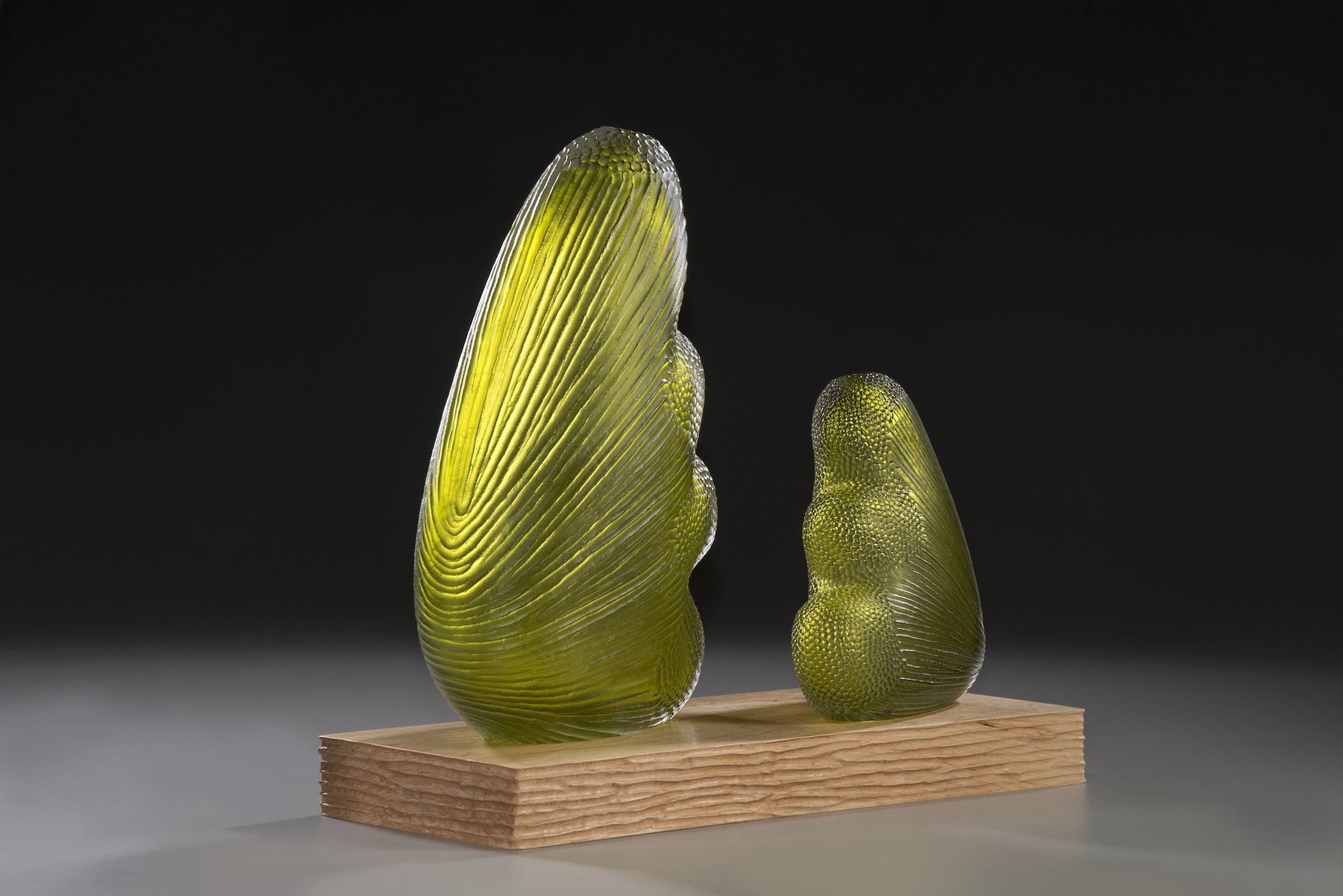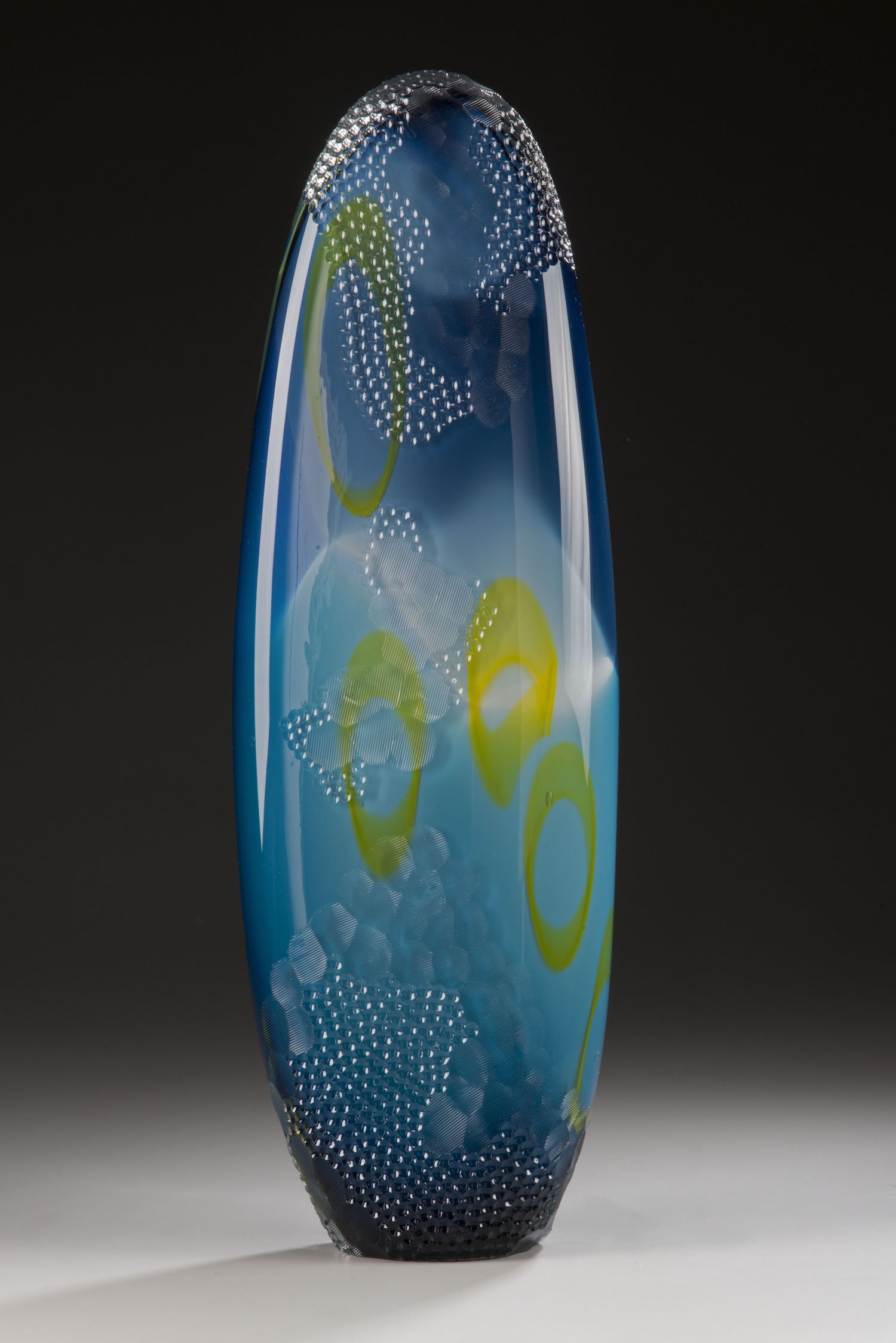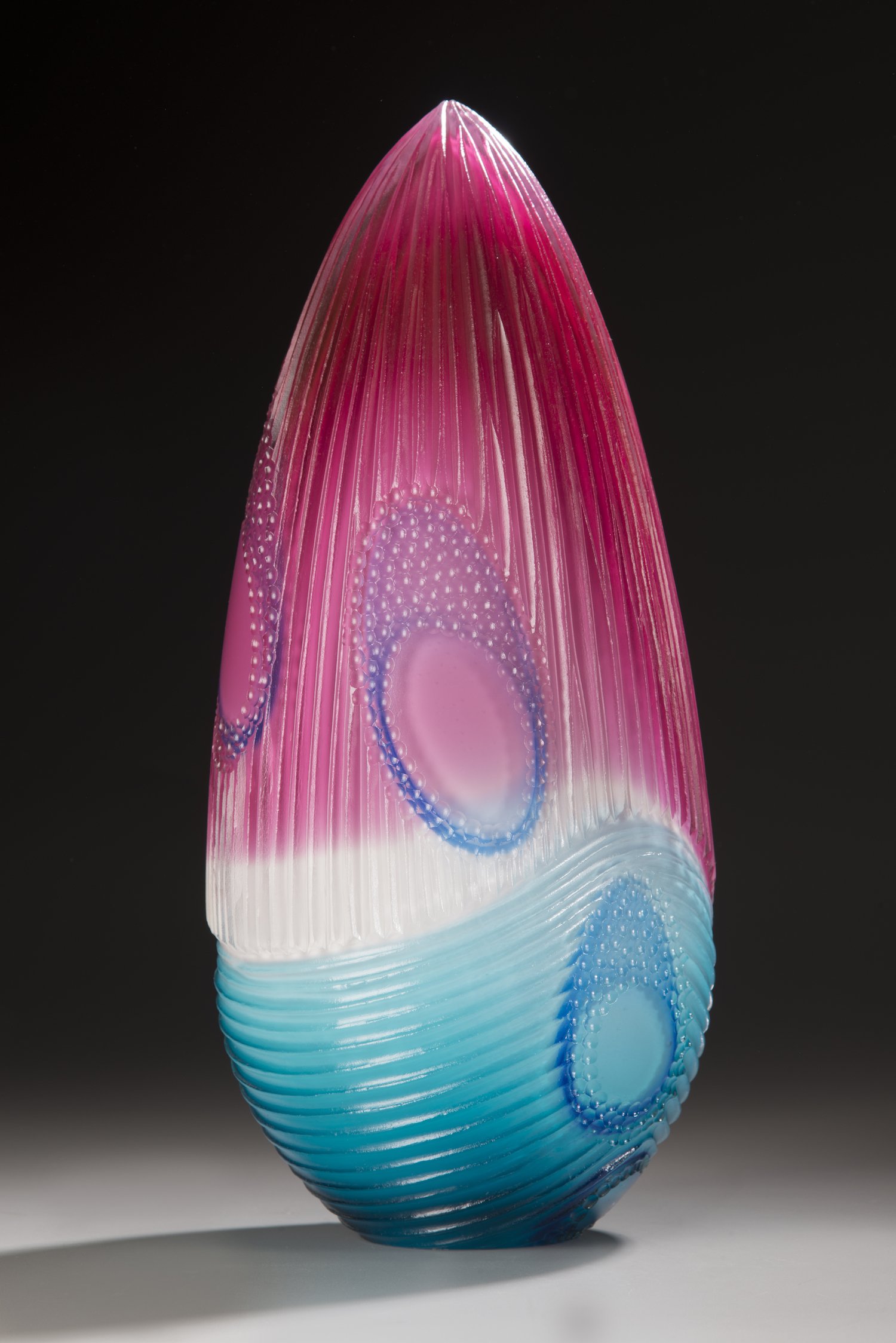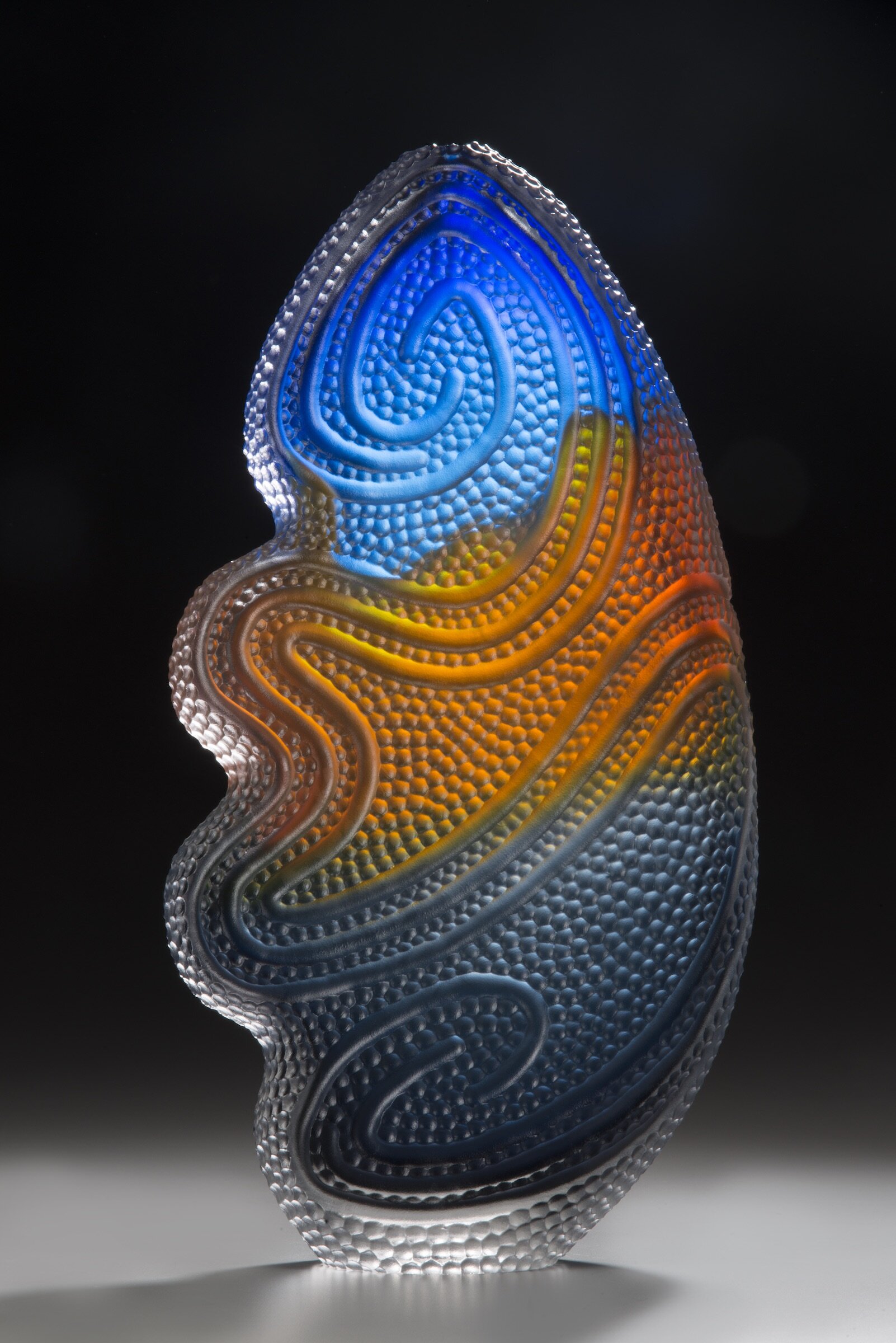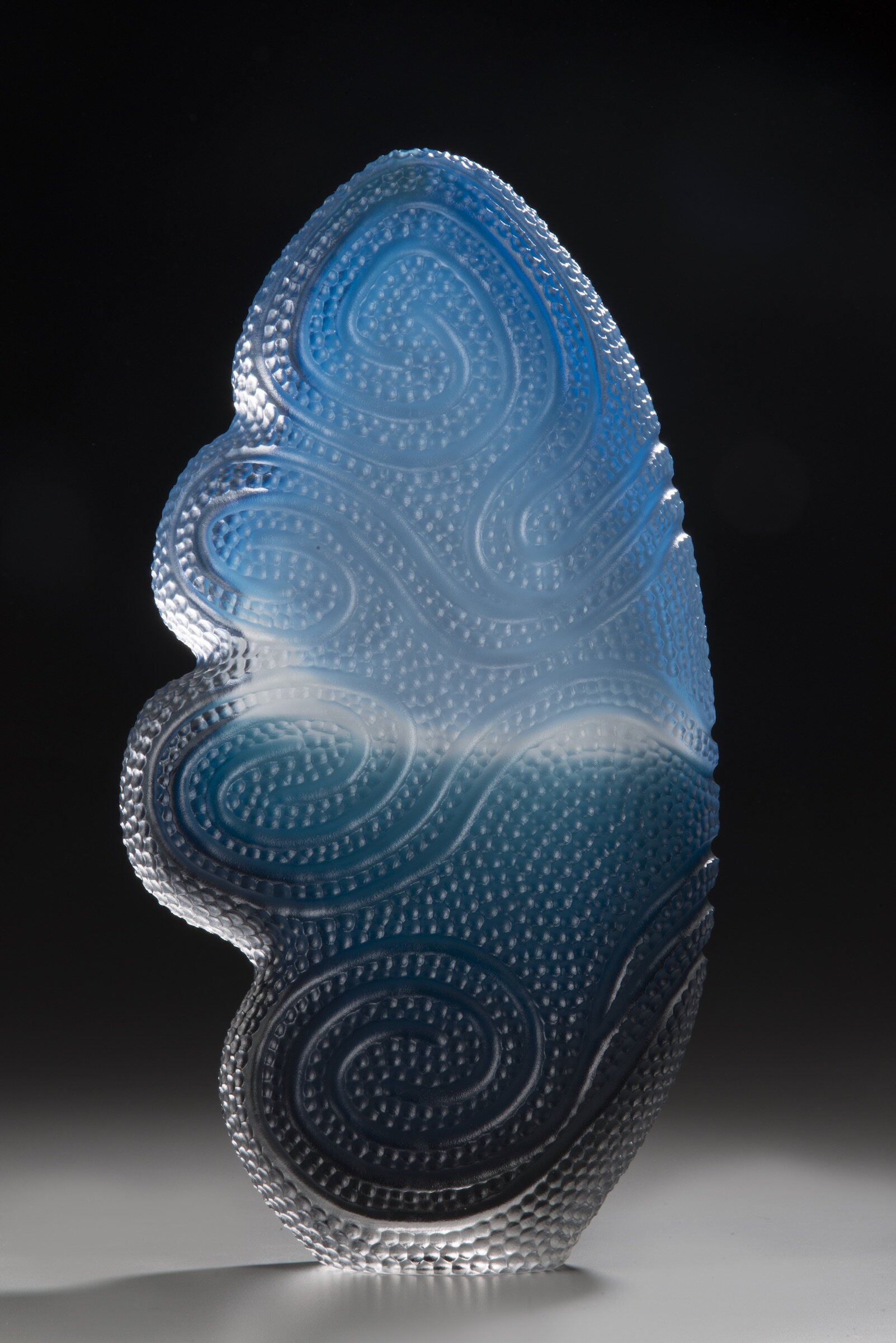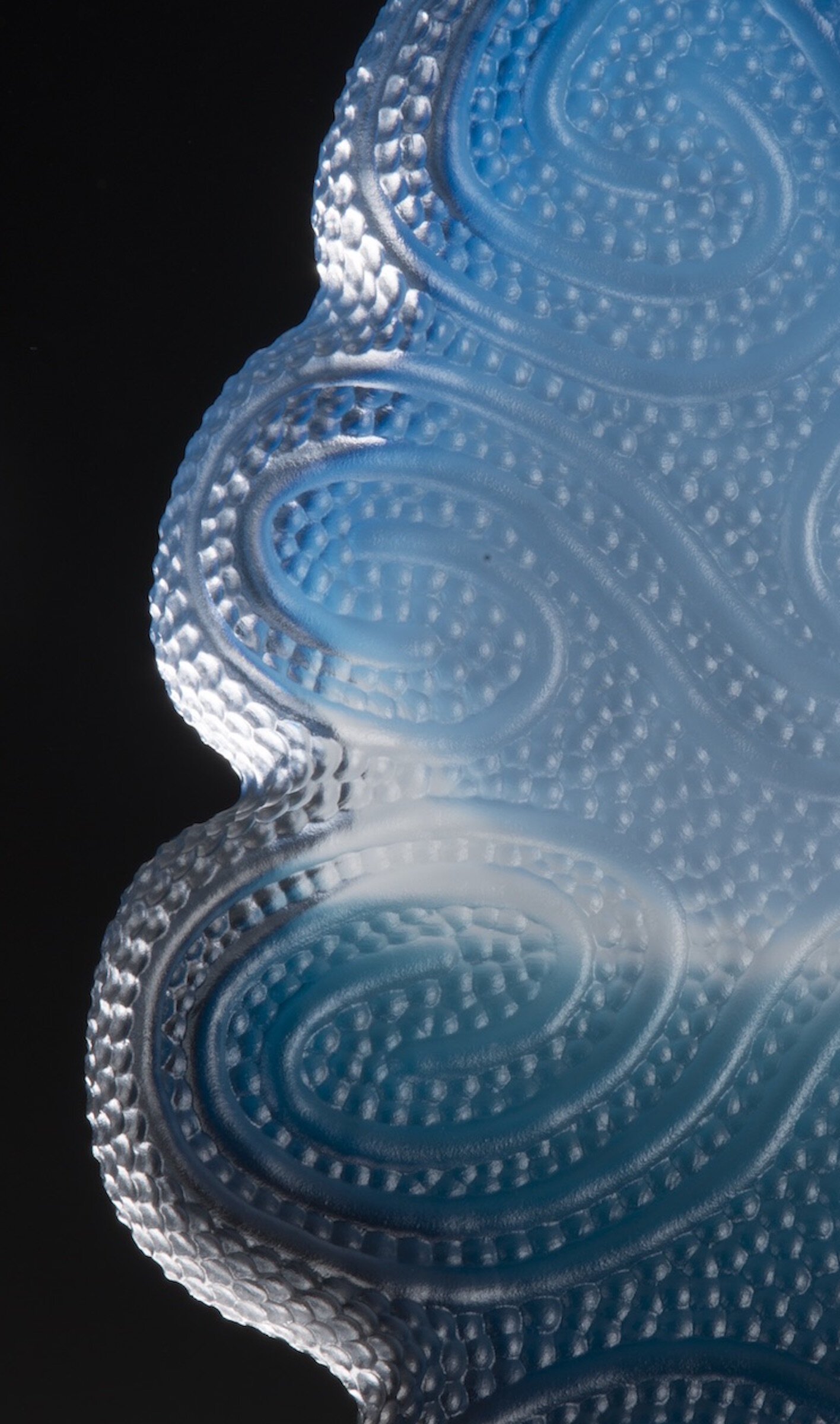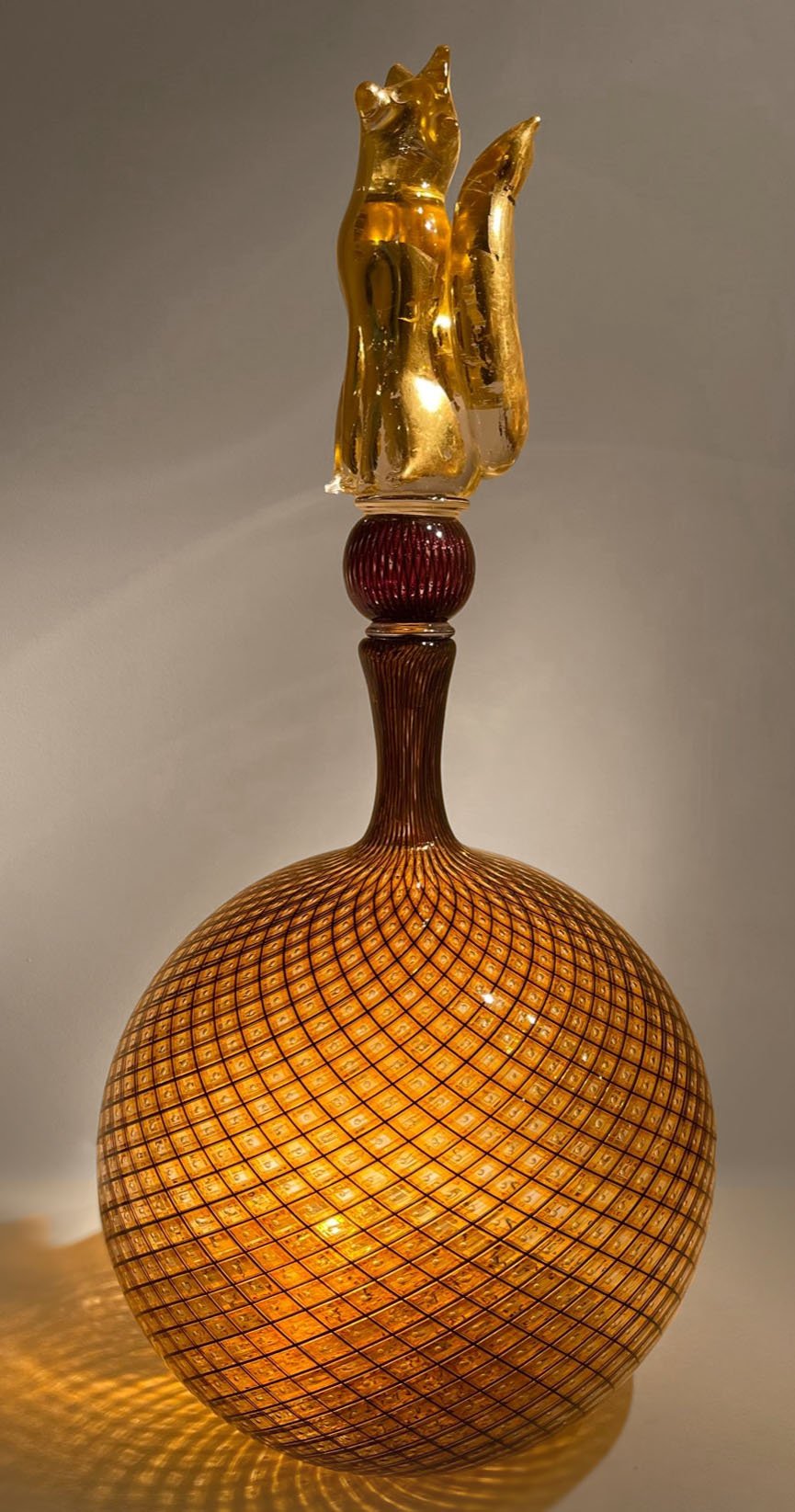offering gratitude through creativity
Dan Friday, with a blown glass canoe paddle.
A member of the Lummi Nation, Dan Friday has grown up around traditional Native American and Lummi Tribe artistic practices his entire life. In his own work he immortalizes these traditional artistic practices in the new contemporary art format of glass, making his work both of the moment and grounded in the past.
Having studied under the very best at Pilchuck, Friday moved to work at the highly established Chihuly Boathouse Studio, Pilchuck Glass School, and Tacoma Glass Museum Teams. In 2007 he began his own studio, Friday Glass, in Seattle’s historic Fremont district, a fitting home for this lifelong Washington State resident. Here in his studio he creates his own work often influenced by his Lummi tribal roots and artistic family traditions.
“Creativity was fostered in me by my family from an early age. Living without TV and knowing our rich cultural heritage of the Lummi Nation, meant that making things with our hands was a regular activity.”
In Friday’s studio, these long practiced traditional tribal art forms are adapted; totem poles and baskets take on new meaning and form along with animals of importance to the Lummi Tribe. All now made to last for generations in the medium of glass and creating a new method of storytelling. Much of Friday’s work also memorializes his family in making these pieces and are full of history and personal meaning.
“My great-grandfather, Joseph Hillaire, is a pretty well renowned totem pole carver, and he is a large influence on me. I do some work in totems...obviously they are not the same because of the nature of working with glass. That is one of the things I really enjoy quite a bit about glass - being able to explore these forms and ideas. I say it is a contemporary medium, but also that in this area, (Seattle), it also has such a long history. “…Like when I studied at the Corning Museum of Glass for my recent residency, you go in there and look at a 4000-year-old face of Cleopatra that looks like it could have been made yesterday. Even though glass is considered fragile, it has such a resilience. Many of my grandfather's totem poles have returned to the earth just through decay, that is just the nature of artwork of native people in this area.”
Going on to explain, “it is exciting to think these glass creations I make will live on for quite a while. Whether or not they break or come apart, they will not deteriorate. There will be a glass totem thousands of years from now with my name scratched on it and that is an interesting feeling.”
Friday’s great-great-grandfather was also an influential Lummi tribal artist. He established a popular dance troupe in the 1930’s who went on to perform at the World’s Fair in 1962, where he also had a Totem Pole commissioned and displayed.
Dan’s aunt continued the tradition of artistic expression through her baskets and was a Lummi Master Weaver, some of her blankets can now be seen featured in the Smithsonian in DC. In Friday’s own work, a series of woven glass baskets forever pay homage to his aunt and are known as Aunt Fran’s Baskets Series.
Aunt Fran James with some of her baskets.
“The Basket Series is something I started after my Aunt, Fran James, passed away about 6 years ago. I really wish she could have seen them, because she was so paramount to me when starting my career.” Dan says of his Aunt’s encouragement to make his pieces and explore his own creativity (instead of following a career as a hired hand on various glass teams). “She was paramount in saying “you have got to find your own voice” and I can’t thank her enough (for that).”, he says with fondness.
Likewise, his statuesque bear figures stand as shining glass symbols of his family. “We are the bear family.” He told us, “Named for my great-grandfather Frank Hillaire, it is the “Hillaire Bear”. He was not a chief, but a very prominent member not just in our tribe but the whole region. As he got older, he would say ‘keep my fires burning’.”
Keeping those creative fires burning is something Friday takes to heart in his molten works of bear and other animals significant to the tribe such as owls and ravens. These pieces dance with of color and patterns, often in unexpectedly delightful ways.
“A lot of it comes from my time working with Dale.” Friday says of his inspirations and the way he has come to see color. Friday has been a glassworker at the Chihuly Boathouse since 2000, helping bring to life Dale Chihuly’s designs and working with one of the largest teams in glass. “He (Chihuly) is famously quoted for saying ‘there is no color I don’t like’ and he uses all of them within the color palette. And that has definitely broadened my appreciation of just the large spectrum of color.”
Going on to explain the lessons he has picked up from working with Chihuly, “...part of the trick is how to apply colors so they complement each other, I used a load of colors and I like to use a lot of vibrant colors, but I also like them to have harmony to them too... Sometimes it isn't even a color combination that initially you think will go together, but you have to look at the proportion of a color. Like 98% of something, then just a pinstripe or accent of another color. You can get colors that may not mesh well together to find a way to fit if you are patient enough.”
This riot of color, which can be as seamlessly free flowing as the aurora borealis or a precise pattern of caning work, is what so often attracts viewers to Friday’s pieces. All of which have a certain soft, circular simplicity to their silhouette, which acts as the perfect form to showcase all that color.
Owl Totem
In addition to paying tribute to his roots in his work, Friday makes sure to include a little piece of himself in each work. In addition to his signature which he signs each piece, Dan has added his own personal symbol somewhere on each. One circle inside of another, it is an abstracted eye he considers his mark.
“It is a symbol I have been drawing since I was a little kid, and it has been drawn since my first carvings as a kid. It is an eye and it is typical in north west coastal works. I like to think of them as planets too. I enjoy how all things want to be round, especially when you work with glass, things spinning, that centrical force.”
As new life is breathed into tradition inside the walls of Friday’s glass studio, a new type of Native American relic is created to be passed down and tell the stories and traditions of the Lummi Nation for many years to come.
~Katy Holt
